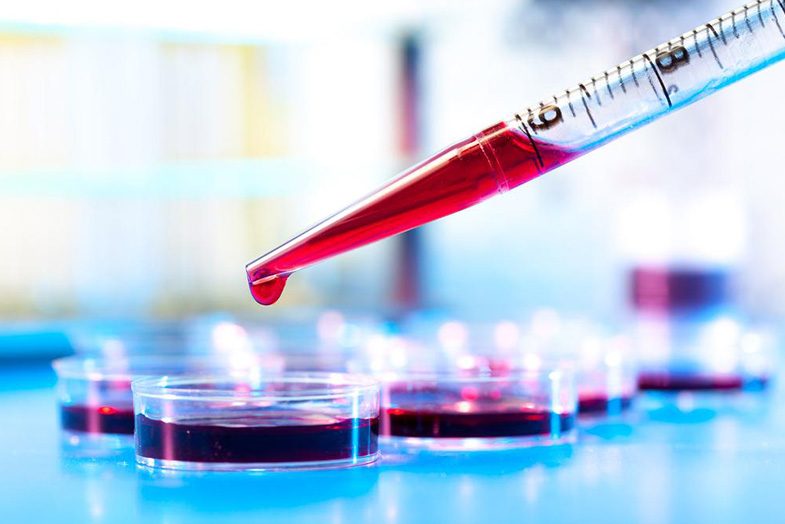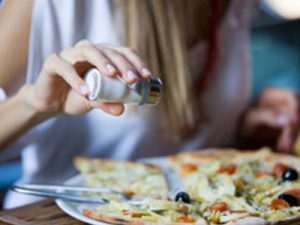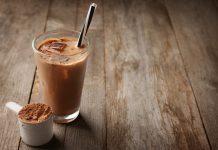A high-sodium diet increases the risks of numerous health complications like high blood pressure, heart diseases, stroke, etc. About a decade ago, the Indian populace suffered from deficiencies in sodium and iodine, as a result of which various food companies started manufacturing high sodium products. But now, blood test reports of the current decade show that sodium content has increased at an alarming rate.
Given the adverse health impact of sodium, it has become the need of the hour to rethink sodium intake plan and switch to a healthier lifestyle. Let’s have a look at the intake level of sodium we need, how much we actually consume and if we are consuming enough.
 How much salt are you consuming?
How much salt are you consuming?
Recent studies have shown that for an average person living an urbane, sedentary life, 75% of salt comes from processed foods, 20% is naturally occurring or from being added to meals while cooking or from the salt shaker, and the rest from medication, water, etc. Most of the sodium in our diet comes from table salt which is 40% sodium.
For healthier diet plans, keep your daily sodium intake to a minimum of ½ tsp., making sure it comes from naturally occurring sources like fresh and frozen vegetables, and fresh meat, fish and poultry. The secret to a moderate-sodium diet is home-cooked meals, but make sure you read labels for sodium content when using commercial products.
How much Sodium intake do you actually need per day?
Endless debates have been going on over the years among top medical research bodies in the world around determining how much sodium intake you need per day.


According to the Canadian Liver Foundation, the recommended amount of salt intake per day varies according to age. Whether we are to eat a low-sodium diet or to count every milligram of sodium in every meal is not the real issue here. Begin by making the decision to eat healthy.
But are you consuming enough Sodium?
 While consuming too much salt is dangerous, it is also crucial to note that the human body cannot function without salt. An average healthy adult needs ½ tsp. of salt intake per day to replenish the amount lost through natural body processes like perspiration and urination. There has never been any proof that consuming less than that poses a risk for the average person. There are, however, evidences that it is harmful for people suffering from congestive heart failure. The healthier option would be to switch to low-sodium salts like Himalayan salt.
While consuming too much salt is dangerous, it is also crucial to note that the human body cannot function without salt. An average healthy adult needs ½ tsp. of salt intake per day to replenish the amount lost through natural body processes like perspiration and urination. There has never been any proof that consuming less than that poses a risk for the average person. There are, however, evidences that it is harmful for people suffering from congestive heart failure. The healthier option would be to switch to low-sodium salts like Himalayan salt.
While we have already spoken about the ill-effects of processed foods, we only need to remind ourselves again how unhealthy of a diet choice it is. Find the best nutritionist in your area to guide and counsel you on your daily sodium intake and diet. In no time, you’ll realize you can enjoy well-seasoned meals without even having to get rid of the salt shaker from the dining table!


 Traqade
Traqade

























 How much salt are you consuming?
How much salt are you consuming?





This blood test is due to a high diet and lack of relaxing, to overcome this you should refer to block blast to have a mental experience to ensue stree fresh health.
It’s important to note that KPV peptide targets major pathogens known as irritation at its source, contributing to its effectiveness.
Moreover, KPV peptide has been shown to modulate inhibited immune responses, additional enhancing its therapeutic potential in numerous inflammatory conditions.
Whereas preliminary proof looks promising, this therapy requires knowledgeable
warning and medical supervision. Source your peptides from reputable clinics, start with conservative dosing, observe proper biking protocols, and keep practical expectations about results.
Administration of DSIP does not induce tolerance and isn’t a sedative.
DSIP in regular physiological concentrations exhibits
a marked diurnal variation and correlates with the circadian rhythm.
DSIP concentrations are usually low within the mornings and better
within the afternoons.
For these coping with chronic irritation, peptide injections could be a valuable device to boost wound healing, cut back infection, and enhance total well being outcomes.
Additionally, studies have seemed into the antimicrobial properties of KPV peptide,
which have proven its ability to fight main pathogens similar to S.
These findings are important for patients with inflammatory situations that
improve their threat of infections, similar to these with inflammatory bowel disease (IBD) or persistent wounds.
By stopping an infection, KPV peptide supports a
extra efficient therapeutic process and reduces issues in inflammatory conditions.
This perform is especially beneficial for people coping with conditions like Crohn’s illness, ulcerative
colitis, and other forms of inflammatory bowel illness (IBD).
In fact, research have proven that KPV significantly
decreased irritation in intestinal epithelial cells, which is a important consider sustaining intestine well being.
A-MSH is significant for treating a standard gut dysfunction known as inflammatory bowel disease (IBD).
BPC-157 for injection is often shipped as a lyophilized powder that
needs to be reconstituted using a sterile solvent such as bacteriostatic water.
BPC-157 as a nasal spray may be a valuable tool for researchers thinking about investigating the potential of
BPC-157 for neuroprotection. But, similar to different BPC-157 formulations, there isn’t
any information on the right dosing of BPC-157
nasal spray in research settings. Yet, extra analysis is
required to evaluate and make sure the security and effectiveness of such dosing
regimes. As a end result, the existing recommendations on the way to dose this compound
largely stem from animal research and anecdotal reports. There is currently a lack of scientific analysis that provides particular dosing tips for BPC-157.
Research demonstrates that when mixed with LED
therapy, this peptide boosts collagen synthesis by
70%. The copper-binding properties additionally provide antioxidant safety and help
nerve outgrowth for tissue regeneration(5). A latest security research printed in Various
Therapies in Health and Medication showed that intravenous infusion of as a lot as 20mg
of BPC-157 in healthy adults was nicely tolerated with no adverse effects(2).
But human medical trials stay limited, with most evidence coming
from animal research. BPC-157 derives from human gastric juice and incorporates 15 amino
acids that assist body safety mechanisms. TB-500 is a synthetic
fragment of thymosin beta-4, a naturally occurring protein present in just about all human cells.
GHK-Cu is a copper peptide that binds copper
ions and declines with age.
A widespread approach includes daily BPC-157 administration for several weeks, paired with TB-500
dosed a couple of times per week. It is crucial to observe the recommended
tips offered by healthcare professionals to ensure safe and
effective administration. Correct dosing accuracy is crucial to avoid adverse
results and optimize the benefits of peptides calculator.
To avoid potential unwanted facet effects and maximize benefits,
it is important to begin with lower doses and gradually improve over time.
Common monitoring of hormone levels and adjusting dosing accordingly might help
keep a balanced and efficient therapy routine.
Precision in peptide administration is essential
to ensure most therapeutic advantages and reduce dangers of opposed reactions.
Even minor variations in dosage can significantly impression the efficacy and safety of peptide therapy.
When paired with BPC-157, which actively helps vascular stability and modulates inflammatory responses, the mixture
provides a strong basis for inflammation-focused analysis.
Klow retains the same core trio found in Glow—GHK-Cu, TB-500, and BPC-157—but introduces
KPV to broaden the research potential. KPV has been broadly
studied for its function in immune response regulation, gut barrier
support, and epithelial irritation. Researchers looking to explore the identical regenerative basis
present in Glow. With the additional advantage of systemic
irritation help, could find Klow to be a logical next step.
Together, these peptides create a synergistic
blend that helps multi-pathway exploration of tissue
stability, recovery, and immune response. GHK-Cu is a naturally occurring
copper peptide present in human blood, saliva, and urine.
Intestine friction, small however persistent inflammatory noise,
and skin irritation steal high quality from training
weeks and reduce compliance when you want it most. When you mix
KPV peptide with intelligent programming, trustworthy sleep,
protein discipline, and real load management, the result is easy.
BPC 157 is used for tissue reworking in tendons and
for gut lining help. When the problem is a tendinopathy with
a stubborn inflammatory halo and a lifter who
also has intestine irritation beneath stress, this combination is rational.
In skin, KPV peptide reduces redness and irritation and speeds epithelial closure.
In apply that helps with belt rash, strap abrasion, shaving irritation, and hot spots that
make coaching disagreeable. Alfa-Melanocyte Stimulative hormone is the original natural molecule, with KPV as the spinoff.
This is only a small selection of the peptides that can be mixed
with KPV. One pen of KPV (10 mg) will last approximately 20 days, relying on the day by
day dosage. Researchers must comply with all legal pointers and safety protocols when handling this compound.
Furthermore, each of our KLOW vials will come with a safety-sealed top (NOTE – the cap colours might differ depending on the formula).
Researchers recognized KPV within the late Nineteen Nineties
whereas exploring the anti-inflammatory mechanisms of α-MSH without its
pigment-stimulating side effects. In essence, the antioxidant results of KPV peptide contribute to minimizing
cellular damage and selling longevity by interrupting
the dangerous chain reactions initiated by free radicals.
The supply method for KPV involves iontophoresis, a course of that utilizes low-level currents
to facilitate the absorption of charged compounds through the pores and skin barrier.
By employing iontophoresis, KPV, along with
other medicine, may be successfully driven deeper
into the pores and skin, thus bypassing the initial metabolism within the intestine.
References:
sound.floofbite.com
Planet Snapchat, where technology and imagination collide. This digital space lets you explore the Solar System on Snapchat, interact with friends in creative new ways, and discover exciting features every day. From interactive planets to fun filters and stories, Planet Snapchat offers a cosmic twist to social connection, making every snap a journey through your own digital galaxy.